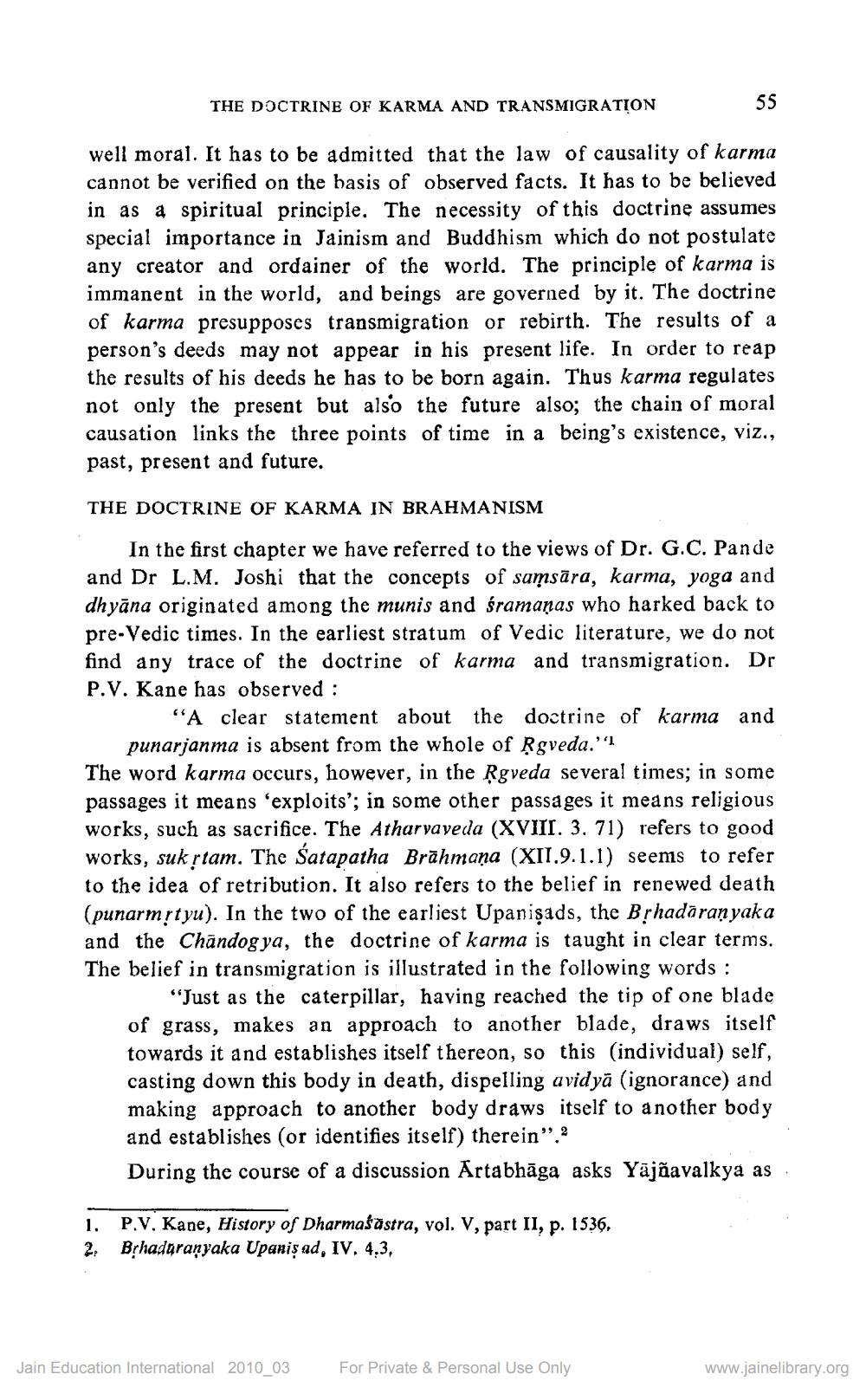________________
THE DOCTRINE OF KARMA AND TRANSMIGRATION
55
well moral. It has to be admitted that the law of causality of karma cannot be verified on the basis of observed facts. It has to be believed in as a spiritual principle. The necessity of this doctrine assumes special importance in Jainism and Buddhism which do not postulate any creator and ordainer of the world. The principle of karma is immanent in the world, and beings are governed by it. The doctrine of karma presupposes transmigration or rebirth. The results of a person's deeds may not appear in his present life. In order to reap the results of his deeds he has to be born again. Thus karma regulates not only the present but also the future also; the chain of moral causation links the three points of time in a being's existence, viz., past, present and future.
THE DOCTRINE OF KARMA IN BRAHMANISM
In the first chapter we have referred to the views of Dr. G.C. Pande and Dr L.M. Joshi that the concepts of samsāra, karma, yoga and dhyāna originated among the munis and śramanas who harked back to pre-Vedic times. In the earliest stratum of Vedic literature, we do not find any trace of the doctrine of karma and transmigration. Dr P.V. Kane has observed :
"A clear statement about the doctrine of karma and punarjanma is absent from the whole of Ķgveda.'1 The word karma occurs, however, in the Ķgveda several times; in some passages it means 'exploits'; in some other passages it means religious works, such as sacrifice. The Atharvaveda (XVIII. 3. 71) refers to good works, suk rtam. The Satapatha Brāhmana (XII.9.1.1) seems to refer to the idea of retribution. It also refers to the belief in renewed death (punarmrtyu). In the two of the earliest Upanisads, the Brhadaran yaka and the Chandog ya, the doctrine of karma is taught in clear terms. The belief in transmigration is illustrated in the following words :
"Just as the caterpillar, having reached the tip of one blade of grass, makes an approach to another blade, draws itself towards it and establishes itself thereon, so this individual) self, casting down this body in death, dispelling avidyā (ignorance) and making approach to another body draws itself to another body and establishes (or identifies itself) therein".2 During the course of a discussion Artabhāga asks Yajňavalkya as
1. 2.
P.V. Kane, History of Dharmaśāstra, vol. V, part II, p. 1536. Brhadaranyaka Upaniş ad, IV. 4.3,
Jain Education International 2010_03
For Private & Personal Use Only
www.jainelibrary.org




